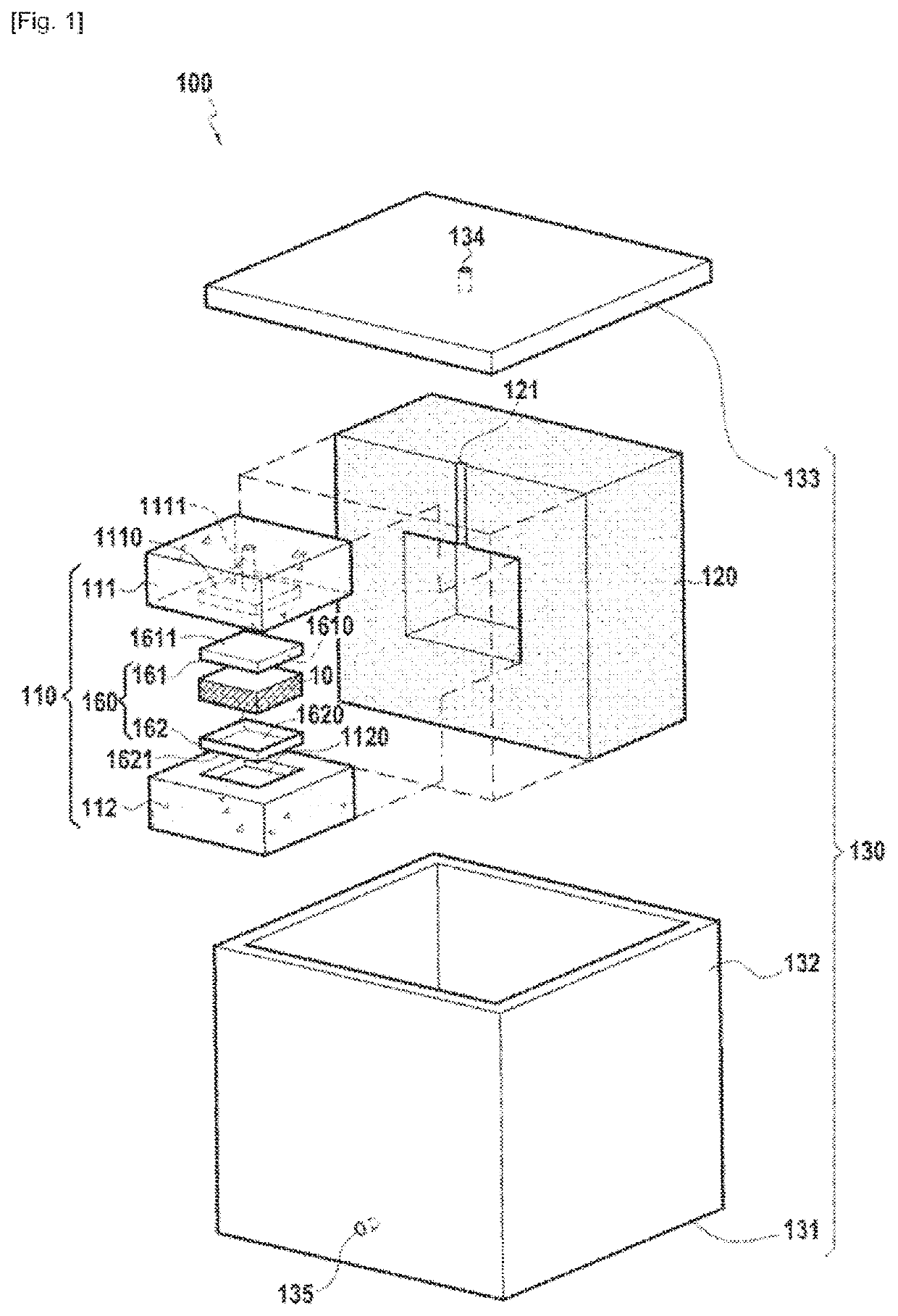Method for producing a part from composite material by injecting a filled slip into a fibrous texture
a composite material and filling technology, applied in the direction of ceramic shaping apparatus, manufacturing tools, discharging arrangement, etc., can solve the problems of the blank catching on the mould, the risk of deformation and/or damage of the blank and/or the mould during the demoulding operation, and the delicate operation of the blank after the injection and filtration of the filling slip
- Summary
- Abstract
- Description
- Claims
- Application Information
AI Technical Summary
Benefits of technology
Problems solved by technology
Method used
Image
Examples
Embodiment Construction
[0030]The invention generally applies to the manufacture of parts created by injection of a particle-filled slip into a mould able to drain or filter the liquid phase of the slip so as to retain the particles that then constitute all or a portion of the part. In a non-limiting manner, the tooling of the invention can be used to manufacture single-piece ceramic parts, parts or coatings of abradable material and parts of thermostructural composite material, especially of the oxide / oxide type or with a ceramic matrix (CMC).
[0031]We will now describe a manufacturing method of the invention applied to the manufacture of a composite material part of the oxide / oxide or CMC type. The method for manufacturing a composite material part, especially of the oxide / oxide or CMC type, according to the present invention starts by creating a fibrous texture intended to form the reinforcement for the part.
[0032]The method for manufacturing a composite material part, especially of the oxide / oxide or CM...
PUM
| Property | Measurement | Unit |
|---|---|---|
| Temperature | aaaaa | aaaaa |
| Temperature | aaaaa | aaaaa |
| Temperature | aaaaa | aaaaa |
Abstract
Description
Claims
Application Information
 Login to View More
Login to View More - R&D
- Intellectual Property
- Life Sciences
- Materials
- Tech Scout
- Unparalleled Data Quality
- Higher Quality Content
- 60% Fewer Hallucinations
Browse by: Latest US Patents, China's latest patents, Technical Efficacy Thesaurus, Application Domain, Technology Topic, Popular Technical Reports.
© 2025 PatSnap. All rights reserved.Legal|Privacy policy|Modern Slavery Act Transparency Statement|Sitemap|About US| Contact US: help@patsnap.com


